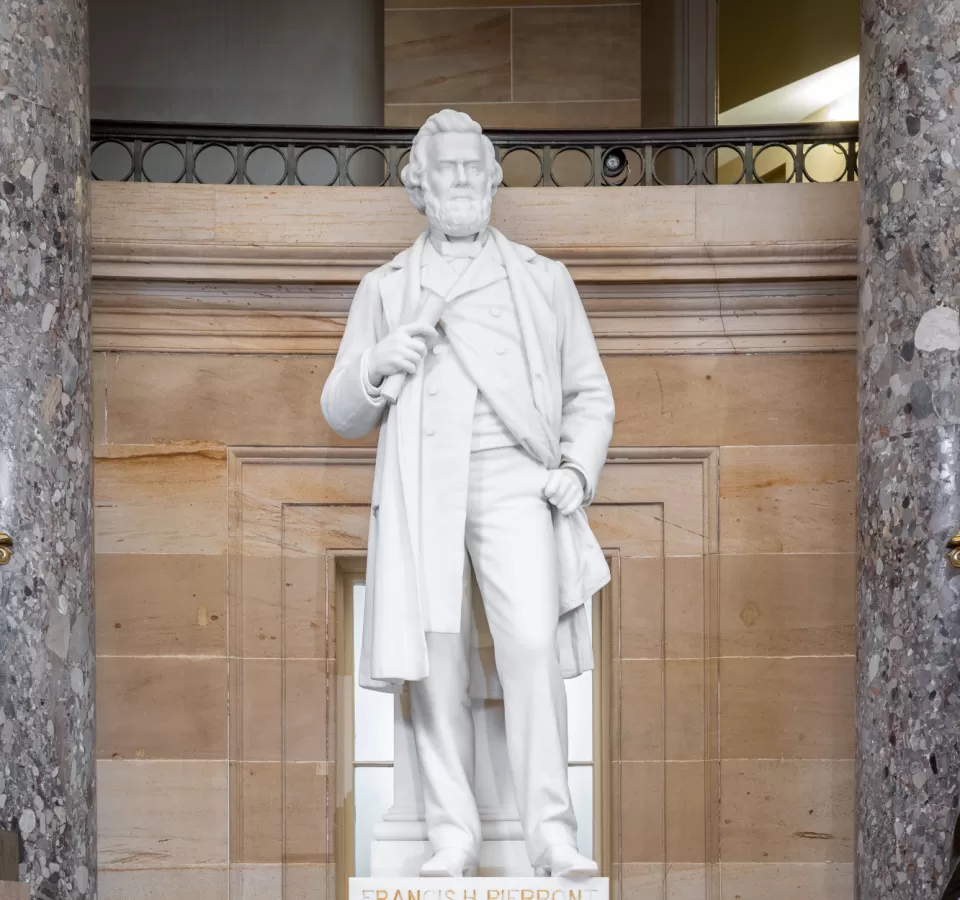This statue of Francis Harrison Pierpont was given to the National Statuary Hall Collection by West Virginia in 1910.
Born in Virginia on January 25, 1814, Pierpont was linked with its history for the rest of his life. He grew up in western Virginia, in what is today Marion County, West Virginia, graduated from Allegheny College, and was admitted to the bar in 1841. In 1848 he became the local attorney for the Baltimore and Ohio Railroad.
An active supporter of Lincoln, Pierpont became more involved in politics with the outbreak of the Civil War. When Virginia seceded, he organized a convention of Unionists, which declared that their elected officials had abandoned their posts and elected Pierpont provisional governor of Virginia. A legislature was set up, a new constitution was drafted, and representatives were seated in the Federal Congress. The state adopted the name West Virginia and was admitted into the Union in 1863. When a new governor was elected for West Virginia, Pierpont became governor of the "restored" state of Virginia, those counties occupied by Union troops. The capital, originally in Alexandria, moved in 1865 to Richmond, where Pierpont became governor of the whole state of Virginia.
After he was replaced by a military commander in 1868, Pierpont returned to his law practice in West Virginia. He served one term in the state legislature in 1870 and was collector of Internal Revenue under President Garfield. He died 18 years later in Pittsburgh, Pennsylvania, on March 24, 1899.
Artist
Sculptor Franklin Simmons, born in Maine in 1839, developed an early interest in painting and sculpture. After college he moved to Washington, D.C., where he sculpted relief portrait busts of cabinet members and military officers. In 1867, he moved with his wife to Rome and established a studio; except for occasional trips back to the United States, he remained there for the rest of his life. Working in the neoclassical style, he created statues and busts of figures from public life, mythology, and literature.
He was commissioned by the Grand Army of the Republic to sculpt a statue of General Grant to be given to the Congress, and legislation passed in 1890 authorized its acceptance. The first statue that Simmons created was not approved because it was not a good likeness; he sent a second version in 1899, and it was placed in the Rotunda in 1900.
His other works on Capitol Hill include Peace Monument on U.S. Capitol Grounds; statues of William King, Roger Williams and Ulysses S. Grant in the U.S. Capitol; and busts of Vice Presidents Charles W. Fairbanks, Hannibal Hamlin and Adlai E. Stevenson in the U.S. Senate collection. Simmons died in Rome in 1913.

